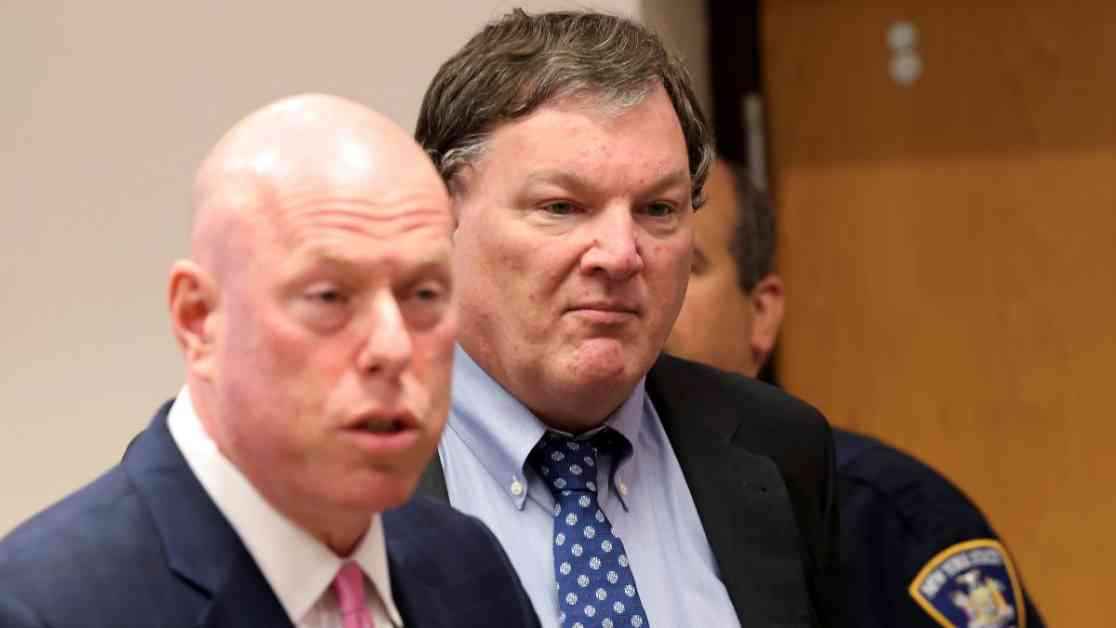Gilgo Beach Killer’s Legal Maneuvers: A Closer Look at Rex Heuermann’s Defense Strategy
Rex Heuermann, a New York architect, is currently embroiled in a legal battle as he faces murder charges in connection with the notorious Gilgo Beach killings that have gripped the Long Island community since late 2010. The case involves the deaths of at least ten individuals, primarily female sex workers, whose remains were tragically discovered along a desolate stretch of highway near Gilgo Beach on Long Island’s south shore.
Heuermann, a Long Island resident, was arrested in 2023 and charged with the murders of three victims: Melissa Barthelemy, Amber Lynn Costello, and Megan Waterman, between 2009 and 2010. Subsequently, while in custody, he was also charged with the deaths of Valerie Mack in 2000, Jessica Taylor in 2003, Maureen Brainard-Barnes in 2007, and Sandra Costilla in 1993. Despite these grave accusations, Heuermann has consistently maintained his innocence and entered a plea of not guilty to all counts.
In a surprising turn of events, Heuermann’s legal team has recently made a bold move by challenging the DNA evidence presented by prosecutors and requesting separate trials for the multiple charges he is facing. Michael Brown, Heuermann’s attorney, argued that the DNA analysis utilized by the prosecution should be excluded from the trial, citing concerns about its acceptance within the scientific community. Brown highlighted the potential risk of Heuermann being wrongfully convicted due to the “cumulative effect” of the evidence against him.
Moreover, Brown emphasized the necessity of holding separate trials for the various charges, outlining the significant differences in the evidence related to each victim’s death. He pointed out the varying time frames, methods of killing, and locations for disposing of the bodies, underscoring the importance of ensuring that each case is tried independently to prevent any unfair prejudice against Heuermann.
Despite the defense’s objections, Suffolk County District Attorney Ray Tierney has vehemently defended the DNA science used in the case, asserting its validity and opposing the motion for separate trials. Prosecutors have maintained that the whole genome sequencing technique, employed by Astrea Forensics, is widely accepted within scientific, medical, and forensic communities. They also noted that the findings from this methodology were corroborated by mitochondrial DNA testing, a well-established practice in New York courts.
In a detailed response to the defense’s challenges, prosecutors revealed that Heuermann allegedly maintained a chilling “blueprint” of his crimes on his computer, containing checklists with tasks for each stage of the killings and practical lessons for potential future incidents. This disturbing revelation sheds light on the meticulous planning and callous nature of the crimes he is accused of committing.
Amidst these legal maneuvers and forensic revelations, a recent development has added another layer of complexity to the case. Heuermann was charged with a seventh murder, that of Valerie Mack, who disappeared in 2000. Prosecutors disclosed that incriminating evidence linking Heuermann to Mack’s death was discovered on his personal computer, further deepening the web of suspicion surrounding him.
As the legal saga unfolds, with Heuermann’s next court date set for February 18, the community awaits the outcome of these contentious proceedings. The clash between the defense’s challenges to the DNA evidence and the prosecution’s staunch defense of its scientific validity sets the stage for a high-stakes legal showdown that will determine the fate of a man accused of heinous crimes. The search for justice in the shadow of Gilgo Beach continues, as the complexities of this case unravel in the courtroom, revealing the darker side of humanity and the pursuit of truth in the face of unspeakable tragedy.


